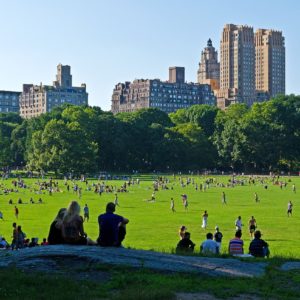When the COVID-19 pandemic disrupted daily life two years ago, Americans sought refuge outdoors. That year, 53 percent of people participated in outdoor recreation at least once, the highest participation rate on record. That success continues today, with increases in outdoor recreation among more diverse populations, including females, young people and urban residents.
The pandemic showcased the demand and the need for close-to-home outdoor recreation opportunities. Unfortunately, this access is sorely lacking for far too many. We are acutely aware that equity and inclusion in every aspect of life is essential, and that holds true for outdoor recreation, which is vital to mental and physical health and the growth of local economies.
Nationwide, the growth of outdoor participation was enabled in large part by the availability and accessibility of outdoor spaces within 10 miles of people’s homes. All too often though, that is not the case for many communities of color as a result of past and present cultural and geographical segregation. More than 100 million Americans do not live within walking distance of a park or green space. Further, underserved communities often lack the resources and funds to invest in outdoor areas, leaving many people three times more likely to live in nature-deprived places.
This lack of accessibility to outdoor space is particularly concerning because nature is not an amenity, but a necessity for everyone’s health and well-being. Studies find that separation from nature is detrimental to human development and can increase mental health issues like depression, anxiety and stress. Physician-diagnosed depression is 33 percent higher in residential areas with fewer green spaces.
Insufficient tree cover and few outdoor spaces leave low-income communities more susceptible to developing immuno-compromising illnesses such as asthma — a risk factor for COVID-19. Without green spaces, harmful particles that linger in the air and cause pollution can increase the likelihood of dying of COVID-19 by 8 percent. Investments in green space and trees in all communities across the country — regardless of ZIP code — would help keep people healthier and avoid $4 billion in extra health care costs each year.
The outdoor industry — which contributes $689 billion to the national economy and supports more than 4 million jobs — is committed to ensuring each person the opportunity to enjoy outdoor spaces in their own community by supporting public-private initiatives like creating more close-to-home infrastructure projects in communities that have been traditionally underserved and lack many of the amenities that contribute to a higher quality of life. These projects include accessible walking and bike paths, “parkifying” underpasses, beautifying alleyways, redesigning green space in industrial buildings.
The industry’s support also extends to advocating for state and federal legislative efforts, such as the bipartisan Outdoors for All Act, led by senators Alex Padilla, D-Calif., and Susan Collins, R-Maine, which would prioritize federal funding for inclusive outdoor recreation programs in communities that have long been underserved, and increase health benefits and economic opportunities for those living in low-income and urban neighborhoods.
Additionally, the Parks, Jobs and Equity Act, led by representatives Nanette Diaz Barragán, D-Calif., Michael Turner, R-Ohio, and Joe Neguse, D-Colo., would invest in 1,000 new or upgraded parks, generate $1.37 billion in economic activity, and make long-term investments in the outdoors.
The outdoor industry and its partners are working with policymakers to focus on increasing protection and accessibility to natural areas near cities, especially those with historical ties to nature-deprived groups. By increasing the voices and representation of our diverse populations, more people will be encouraged to participate in outdoor recreation. Together, we can demand greater accessibility to the natural world for all and help more people to get outdoors — because everyone deserves a breath of fresh air.

